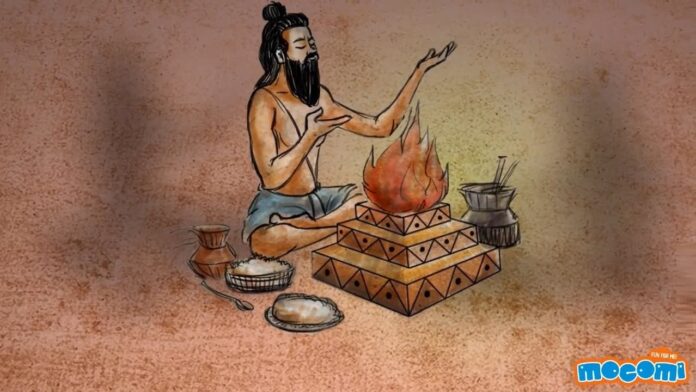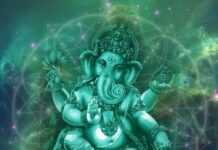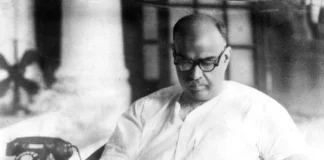One could call the Vedic mantras as a “revelation” because the ancient Rishis clearly stated that they are apaurusheya, which means that they are not created by humans.
By Maria Wirth
What is life ? This question is natural for any human being and is asked in every generation by many of the youth. I remember it troubled me a lot when I was young.
I don’t think I could have found the answer on my own because some basic philosophical knowledge about us and the universe is needed, but luckily I landed up in India and was even luckier to become familiar with India’s profound wisdom. This philosophical knowledge is contained in the Vedas and has painstakingly been memorized by Indian Brahmins and handed down to us over many millennia.
One could call the Vedic mantras as a “revelation” because the ancient Rishis clearly stated that they are apaurusheya, which means that they are not created by humans. This revelation however is not comparable with the so called revelations of Christianity and Islam, because it is not about a claim which can never be verified and which is not conform to common sense, like the claim, “if you don’t believe that this book contains the full truth you burn in hell forever.”
In contrast, the knowledge in the Vedas makes sense, and part of it has already been validated by modern scientists. In fact Veda means knowledge in Sanskrit (from vid) or science in Latin.
Vedas say that in absolute truth there is only consciousness (called Brahman) and though unimaginable, it is described as truth-consciousness-bliss, Satchitananda in Sanskrit. From that eternal, infinite, blissful, conscious ‘void’, the world of forms and names appears, like on the one ocean plenty of bubbles and waves appear. Their form is temporary, the ocean is eternal. Nothing is lost, when the forms are lost. And ultimately even during their existence as forms, the bubbles and waves are nothing but the ocean.
Similarly, claims Indian wisdom, are the forms in this universe in essence nothing but consciousness. There are myriads of forms in different realms – visible and also invisible to our eyes. Devas (usually translated as gods) are also forms, invisible to our eyes and far more powerful and long lived, but they are not the absolute reality. Unmanifested Oneness is the Absolute, is Brahman.
Science came meanwhile also to the conclusion that ultimately all is one, nothing can be separated, all is interconnected, but they have not yet acknowledged the ‘conscious’ aspect. Scientists call this oneness “energy” and assume it is dead, insentient, and they mistake the consciousness of the scientist as some chance happening.
Now this claim that all is blissful consciousness means, that Brahman must be also in us. And indeed, the Upanishad declare “Aham Brahmasmi” (I am Brahman). If this is true, then it must be verifiable.
Indeed the Rishis claim, you can know that you are not a small person in a big world, but that you are one with Brahman. And they give many tips how to go about discovering the truth.
And here we have the meaning of life: discover who you really are. You are not what you think you are, but you are one with all. When you discover it, you won’t run any longer after happiness in the world. You have discovered the ocean of bliss within you.
“Know Thyself” was also encouraged in ancient Greece and probably in all ancient cultures which unfortunately have all been destroyed. Only the Indian culture is still alive and still has true wisdom preserved, though it was also greatly damaged by Christianity and Islam, which want to make man forget his innate divinity.
These two religions, which require blind belief, claim to be about the spiritual well-being of humanity. In fact, it may be just the opposite: over the last almost 2000 years they cut off humanity from the source of spiritual well-being which can be found only in one’s union with the Divine Existence.
Article Courtesy: www.mariawirthblog.wordpress.com








